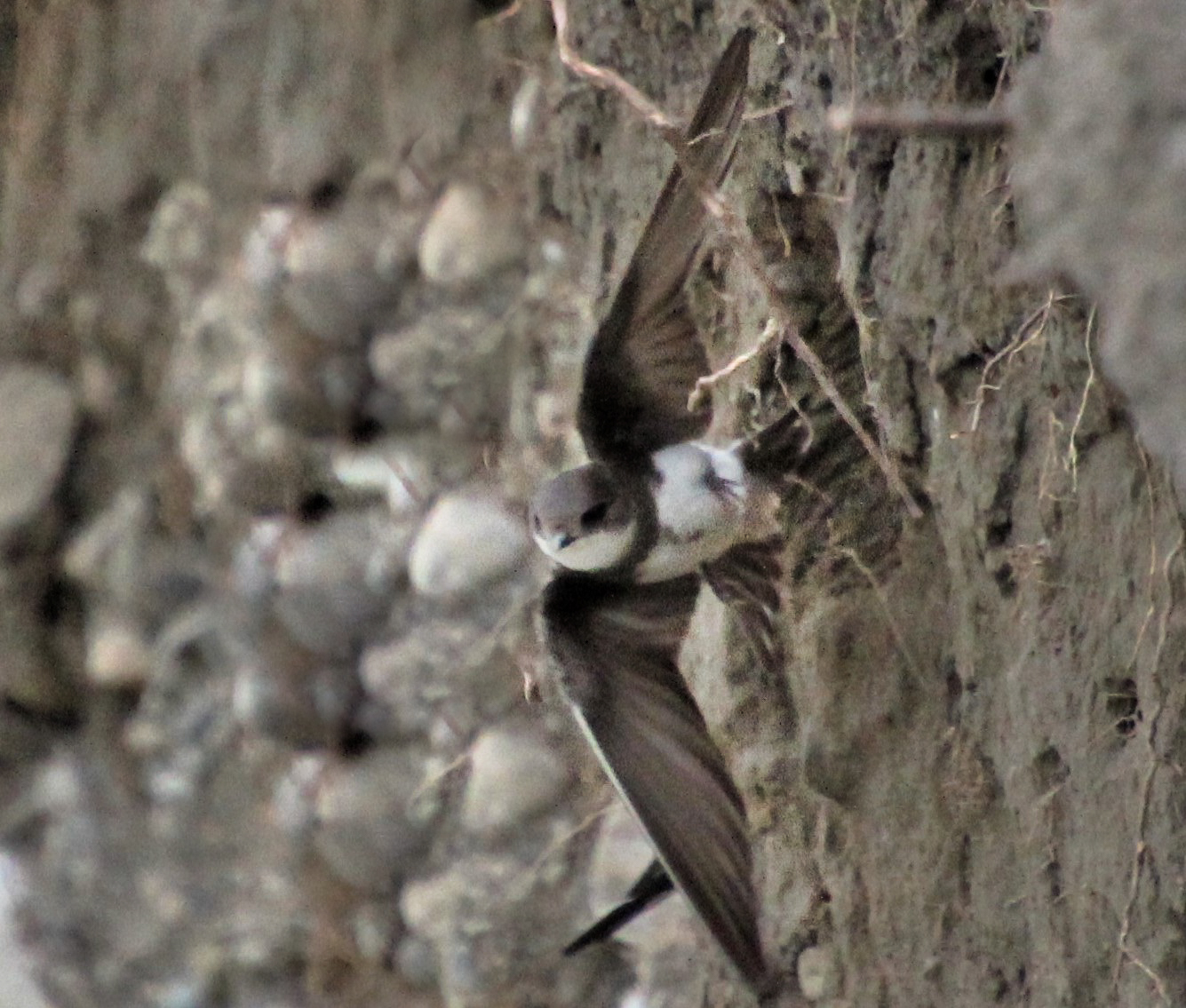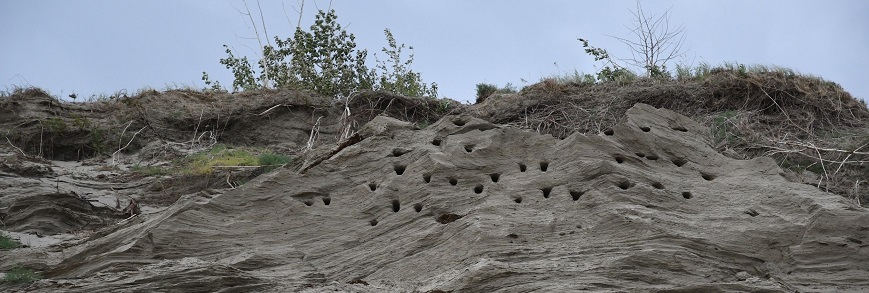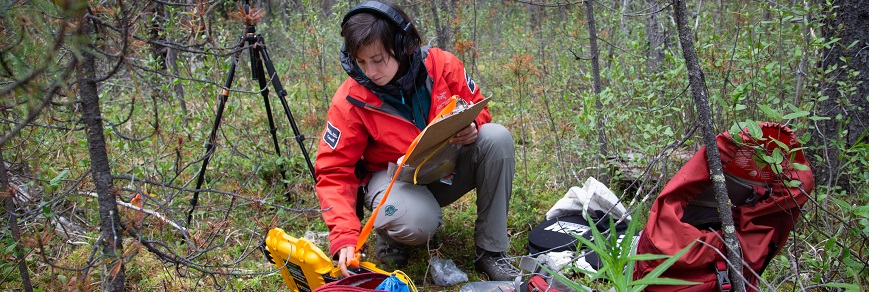
Bank swallow
Jasper National Park
Quick facts
Eats flying insects
Migrates using a fly-and-forage strategy, which means that although their journey is slower than many other birds, they refuel at stopover sites en route
Nests in large colonies in holes burrowed in vertical banks
Weighs about as much as a AAA battery (10-18 g) and is ~12 cm long
SARA status: Threatened (2017)

Swallows (Riparia riparia) are known for their speed and agile flight patterns as they hunt flying insects. Bank swallows are the smallest swallows in the Americas. They can be recognized by a distinctive brown band across an all white breast. There are only two other types of burrowing birds in the Canadian Rockies—the kingfisher and the rough-winged swallow.
Where they live
Bank swallows travel thousands of kilometres each year, flying from summer breeding grounds in North America to wintering grounds in Central or South America.
As their name suggests, bank swallows are burrowers. They dig holes with their beaks and feet in the steep banks found along rivers, roads, and sand or gravel pits. Bank swallows nest in colonies. The colonies may be as small as ten families or as large as thousands of families. Bank swallows stay close to their nests. They rarely venture further than one kilometre away from the colony. They hunt insects in open areas and avoid forested areas.
The Athabasca River has some ideal bank swallow nesting sites, which are best viewed from a boat on the river, rather than by approaching a bank from above. River banks can be unstable; getting too close could put both you and the bank swallows at risk.

Why they are at risk
Migratory birds that eat flying insects have significantly declined around the world since the 1970s. The cause of this decline is likely the combined effects of many factors, including declining insect populations, habitat loss, and climate change.
Flying insect declines
The global decline in flying insects is not well understood. Some possible reasons include: 1) the use of pesticides – which are chemicals used to control weeds, insects and fungus, 2) methods used to boost agricultural production that affect soil and water sources, 3) extreme weather events, 4) destruction of wetlands and 5) the warming climate. Less bugs means less food for migratory birds.
Climate change
Climate change may affect the bank swallow, its habitat and its migration routes in many ways. Changes to the patterns and severity of extreme weather events like fires, droughts and hurricanes all have the potential to impact the black swift and the availability of its insect prey.
Climate change is also causing unpredictable and accelerated bank erosion which will likely affect nesting sites.
Human development and activity
Changes to the land caused by human development such as dams, industrial farming and reforestation of abandoned farms have decreased potential nesting sites and affected their feeding grounds.
Bank swallows use both natural and human-made nesting sites such as sand and gravel pits. Changes to the way this industry operates have contributed to the partial loss of these human-made habitats.
How we are helping
Protecting nesting sites
We prevent nesting sites from being disturbed by putting up signs that encourage people to stay on official trails. We relocate trails as needed.
Restoring habitat
Bank swallows prefer to forage in open areas and tend to avoid dense forests. Carefully planned prescribed fires can restore foraging habitat for these birds.
Monitoring
We observe nesting sites and count burrows from a distance. We do this using a FLIR (forward-looking infrared camera). The FLIR works by taking images that highlight the warmth of the birds against a cold background. Since it needs to be cool, staff need to get up around dawn, before the sandy cliffs warm up.
We monitor a database for bird sightings at ebird.org. Share your sightings to contribute to this citizen science project.

Since 2007, biologists have been monitoring the forest and alpine bird populations in Jasper National Park by listening to their songs. We use recording units, like this one, to record all birds singing and calling at the same 130 sites each year. In winter, bird experts listen to the recordings and identify all the species at each site by their songs, and we use this data to track the trends in our population over time.
Learn more
- Date modified :